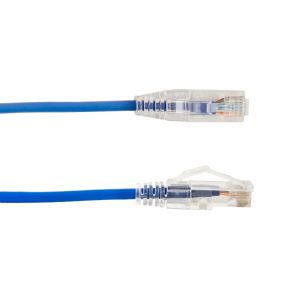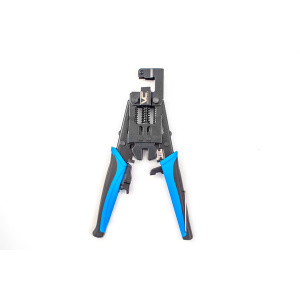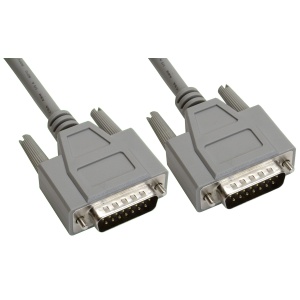Introduction
Life in the digital age is nothing short of extraordinary, a rollercoaster ride powered by unprecedented innovations. One such remarkable amalgamation that’s turning heads worldwide is the powerful combination of 5G and Fiber Optics. You may ask, why does this fusion matter? Well, let’s delve deep and find out!
5G and Fiber Optics: A Powerful Combination
When you hear the phrase ‘5G and Fiber Optics’, think of it as the superheroes of the internet world. They aren’t just the future; they’re here to redefine connectivity as we know it.
5G, or the fifth generation of mobile internet, promises speed that’ll make your head spin – we’re talking about potential gigabit-level bandwidths. Paired with the unrivaled data-carrying capabilities of fiber optic cables, they form an unstoppable force.
Why is this blend so revolutionary? It’s akin to getting the best of both worlds. With 5G, you get superior speed, and fiber optics offer unmatched capacity. Combine these two, and voila – you have a match made in tech heaven!
Understanding the Magic of 5G
5G, the newest kid on the telecommunications block, is the talk of the town for a good reason. It’s a quantum leap in wireless communication, leaving its predecessors in the dust. Offering speeds of up to 100 times faster than 4G, 5G is set to change the game forever.
In addition to blazing-fast speeds, 5G also offers low latency. Now, what does that mean? In simple terms, it’s the delay before data transfer starts after an instruction is given. Lower latency means quicker responses, something essential for applications like self-driving cars and telemedicine.
The Allure of Fiber Optics
While 5G is stealing the limelight, fiber optics has been silently revolutionizing data transmission for years. Fiber optic cables, unlike traditional copper ones, use light pulses to transmit data. The result? Lightning-fast speed and enormous data-carrying capacity.
Fiber optic technology can handle high-speed data traffic like a pro, making it a perfect partner for 5G. It offers high bandwidth and reliable connectivity, essential for handling the data avalanche expected with the broader implementation of 5G.
How do 5G and Fiber Optics Join Forces?
Alright, so we’ve established that 5G and fiber optics are both excellent on their own. But when combined, they bring something unique to the table.
To understand this, let’s take a look at how 5G networks function. The magic of 5G happens through a dense network of small cells, or mini base-stations, which transmit the superfast 5G signals. Now, to function effectively, these small cells need a reliable and high-speed way to communicate with each other and the broader network.
That’s where fiber optics come in. They provide the backbone to the 5G network, connecting the small cells with high-speed, high-capacity data lines. In essence, fiber optics allows the 5G network to realize its full potential.
Elevating the Internet of Things (IoT)
The synergy between 5G and fiber optics is a boon for the burgeoning Internet of Things (IoT). As more devices get interconnected, the demand for faster data transmission and processing power grows. The combination of 5G and fiber optics could provide the much-needed infrastructure for this digital ecosystem to thrive.
Pushing the Boundaries of Innovation
From augmented reality (AR) and virtual reality (VR) to autonomous vehicles and smart cities, the fusion of 5G and fiber optics could be the springboard for innovative technologies. With the capacity to transmit massive amounts of data at incredible speeds, the possibilities seem endless.
Challenges and Solutions in Integrating 5G and Fiber Optics
While the potential of 5G and fiber optics is undeniably attractive, it isn’t without its challenges. Let’s take a look at some of these hurdles and potential solutions.
Installation Costs and Logistical Hurdles
One of the biggest obstacles to the widespread implementation of fiber optics is its high installation costs. Laying down fiber optic cables requires significant investment and time. Moreover, physical obstacles like buildings and geographical features can complicate the process.
However, the rise of micro-trenching and other innovative installation techniques are helping to reduce these costs and speed up the process.
Future-proofing the Network
With the speed at which technology advances, future-proofing becomes a significant concern. However, one of the key strengths of fiber optics is its incredible scalability. By simply upgrading the equipment on either end, it’s possible to boost the network’s speed and capacity without replacing the cables.
The Future of 5G and Fiber Optics
As we move towards a hyperconnected future, the combination of 5G and fiber optics will be central to it. We’re already seeing a glimpse of what’s possible with these technologies, and there’s no telling what marvels the future holds.
Supercharging Remote Work and Learning
As the world grapples with a new normal post the pandemic, remote work and learning have become the norm rather than the exception. The 5G-fiber optic combination can play a critical role in making these digital spaces more efficient and interactive.
Smart Cities and Autonomous Vehicles
Imagine a world where cities manage resources efficiently, traffic flows smoothly, and autonomous vehicles safely ferry passengers. It may sound like science fiction, but the 5G-fiber optic duo could turn this into a reality.
FAQs
- What is the role of fiber optics in a 5G network? Fiber optics provide the backbone for the 5G network, connecting the network’s small cells and allowing for high-speed, high-capacity data transmission.
- Why is the combination of 5G and fiber optics crucial for IoT? As more devices get interconnected in the IoT, faster data transmission and higher processing power become essential. The 5G-fiber optic combination can provide the infrastructure necessary for this digital ecosystem to thrive.
- Are there any challenges in implementing the 5G-fiber optic combination? Yes, implementing this combination does come with challenges, including high installation costs and logistical hurdles. However, innovative installation techniques and the scalability of fiber optics can help overcome these challenges.
- How can 5G and fiber optics impact remote work and learning? The 5G-fiber optic duo can make digital spaces for remote work and learning more efficient and interactive, providing reliable and high-speed connectivity.
- What is the potential impact of 5G and fiber optics on smart cities and autonomous vehicles? The combination of 5G and fiber optics could enable efficient resource management in smart cities and the safe operation of autonomous vehicles by allowing for real-time data transmission and processing.
- What is the future of 5G and fiber optics? As we progress towards a hyperconnected future, the combination of 5G and fiber optics will be at the heart of it, enabling innovations from AR/VR to smart cities and autonomous vehicles.
Conclusion
In the grand scheme of digital evolution, the convergence of 5G and fiber optics stands as a beacon of transformation. Together, they’re powering a revolution in connectivity, opening the door to a world of possibilities. As this dynamic duo continues to shape our digital future, one thing is clear – we’re on the cusp of an exciting new era.












